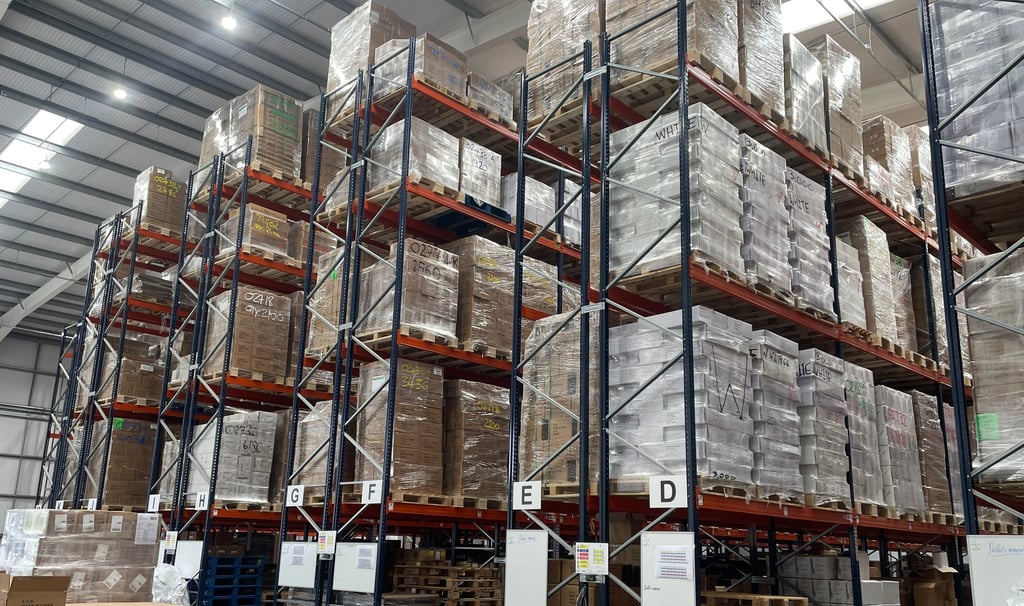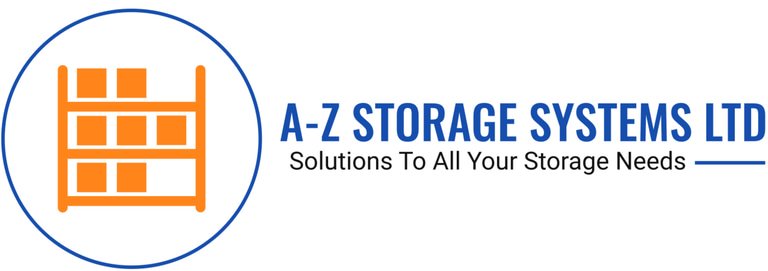Warehouse Design Mistakes That Affect Optimisation
Warehouse Design Mistakes That Affect Optimisation
An efficient warehouse doesn’t happen by chance — it’s built on careful design, smart planning, and a clear understanding of workflow.
At A-Z Storage Systems, we’ve seen first-hand how poor warehouse design can lead to inefficiencies, safety issues, and unnecessary costs.
Whether you’re setting up a new facility or looking to improve your existing one, understanding the common warehouse design mistakes can help you avoid costly errors and maximise your storage potential.
In this guide, we’ll explore the most frequent design pitfalls and how to fix them for long-term optimisation.
1. Ignoring Vertical Space
One of the biggest mistakes in warehouse design is underutilising vertical height.
Too often, businesses focus only on floor space, leaving valuable cubic capacity unused. By implementing pallet racking systems that take advantage of vertical space, you can significantly increase storage density without expanding your facility.
Optimisation Tip:
Install adjustable pallet racking or VNA (Very Narrow Aisle) racking systems to make full use of height while maintaining accessibility.
2. Poor Warehouse Layout and Flow
A warehouse layout that doesn’t match your operation’s workflow can lead to wasted time and bottlenecks. Common problems include:
Poorly positioned loading bays
Narrow aisles that restrict forklift movement
Random storage of fast-moving items far from dispatch zones
Optimisation Tip:
Design your warehouse around your pick path and product flow. Keep frequently accessed goods closer to dispatch and ensure sufficient aisle space for handling equipment.
Efficient warehouse layouts reduce travel time, improve order accuracy, and boost productivity.
3. Overlooking Racking System Design
Not all racking systems are created equal — and choosing the wrong one for your inventory can severely impact efficiency.
For example, using selective pallet racking for bulk goods can waste space, while drive-in racking might not suit operations requiring fast stock rotation.
Optimisation Tip:
Work with a racking specialist like A-Z Storage Systems to select a system tailored to your stock type, turnover rate, and space requirements.
Options include:
Adjustable Pallet Racking (APR) – for flexibility and direct access.
Drive-In/Drive-Through Racking – for high-density storage.
Cantilever Racking – for long or awkwardly shaped loads.
Mobile Racking Systems – for space-saving efficiency.
4. Neglecting Safety and Compliance
Warehouse optimisation isn’t just about speed and storage capacity — safety is a key part of performance.
Ignoring safety standards such as HSE’s HSG76 or failing to conduct regular racking inspections can lead to accidents, downtime, and potential legal action.
Optimisation Tip:
Partner with A-Z Rack Inspections Ltd for annual inspections by SEMA Approved Racking Inspectors (SARIs). Regular checks ensure your racking remains compliant, structurally sound, and safe for daily use.
5. Inefficient Picking Strategies
Order picking is one of the most time-consuming tasks in any warehouse operation. A poorly designed picking process can result in wasted movement and delayed dispatch times.
Optimisation Tip:
Design racking layouts that complement your picking method — whether FIFO (First In, First Out), LIFO (Last In, First Out), or zone picking. Use flow racking or live storage systems to speed up picking for fast-moving SKUs.
6. Failing to Plan for Future Growth
Many warehouses are designed around current needs, without accounting for future expansion. This leads to storage shortages, inefficiencies, and expensive reconfiguration projects down the line.
Optimisation Tip:
Design with scalability in mind. Modular racking systems, mezzanine floors, and flexible layouts make it easier to expand or reconfigure as your business grows.
7. Ignoring Data and Technology
Relying solely on manual tracking can limit efficiency. Modern warehouses leverage Warehouse Management Systems (WMS) and data analytics to monitor stock levels, picking performance, and space utilisation.
Optimisation Tip:
Integrate technology into your racking design. Smart labelling, barcode systems, and warehouse management software improve accuracy and reduce handling errors.
8. Poor Lighting and Accessibility
Lighting might seem minor, but it significantly impacts safety, accuracy, and morale. Poorly lit aisles make it difficult to read labels, identify damage, or move equipment safely.
Optimisation Tip:
Use energy-efficient LED lighting throughout the warehouse and ensure aisles are wide enough for forklifts and pallet trucks to operate safely.
9. Lack of Rack Protection
Even the most well-designed warehouse layout is vulnerable to damage without proper protection. Forklift collisions, pallet impacts, and daily wear can weaken uprights and beams.
Optimisation Tip:
Install rack protection systems such as column guards, end-of-aisle barriers, and bollards to prevent costly damage and prolong the lifespan of your racking.
The Role of Expert Design in Warehouse Optimisation
Every warehouse is different — from layout and product mix to handling methods and storage goals. That’s why professional warehouse design is essential for long-term efficiency and safety.
At A-Z Storage Systems, we specialise in bespoke warehouse racking design, installation, and optimisation services. Our experts create tailored storage systems that:
Maximise available space
Improve accessibility and picking efficiency
Maintain full safety compliance
Prepare your facility for future growth
Work with A-Z Storage Systems
Avoid costly mistakes and design your warehouse for maximum efficiency from the start.
Whether you’re planning a new build, reconfiguring an existing layout, or upgrading your pallet racking, A-Z Storage Systems can help.
📞 Call: 07917 664940 or 07947 886161
📧 Email: sales@a-zstoragesystems.co.uk
🌐 Website: www.a-zstoragesystems.co.uk
A-Z Storage Systems — Creating safer, smarter, and more efficient warehouse environments.


